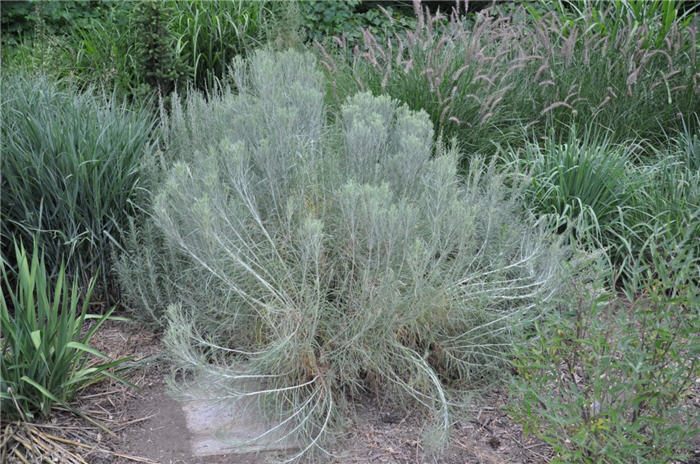| Botanical Name: Artemisia tridentata | |
| Common Name: Big Sagebrush |

-
Anatomy
-
Culture
-
Design
Plant Type
Broadleaf Evergreen, Shrub
Height Range
3-6', 6-12'
Flower Color
Yellow
Flower Season
Summer, Fall
Leaf Color
Grey Green, Grey, Silver
Bark Color
Brown, Grey
Fruit Color
n/a
Fruit Season
n/a
Sun
Full
Water
Very Low, Low
Growth Rate
Moderate, Slow
Soil Type
Sandy, Clay, Rocky
Soil Condition
Average, Poor, Well-drained, Dry
Soil pH
Neutral, Basic
Adverse Factors
n/a
Design Styles
Meadow, Mediterranean, Ranch, Spanish
Accenting Features
Fragrance, Unusual Foliage
Seasonal Interest
Winter, Fall
Location Uses
Background, Shrub Border, Walls / Fences
Special Uses
Erosion Control, Hedge, Naturalizing
Attracts Wildlife
n/a
Information by: Stephanie Duer
Photographer:
Photographer:
-
Description
-
Notes
Big sagebrush is a Utah native and lives up to its name, growing anywhere from a few to 12 feet tall and 5 to 8 feet wide (the variability is a result of seed source, available water, soil conditions, and other factors that affect growth). It is densed branched with fine textured, silver- to blue-green, aromatic foliage. Inconspicuous yellow flowers appear July through november. The bark is brown, twisted, and scaly. This may not be the ideal sagebrush for a traditional landscape, but it would work well in a naturally-styled setting. Very aromatic.
Grow in full sun and well drained soil, preferrably a little on the coarse side. Tolerates gravelly-clay and sandy soils. Alkaline tolerant. Doesn't require watering once it is established. Pruning in the late winter before new growth emerges will keep the shrub a little more tidy. Big sagebrush, when planted in ideal locations, will propagate by seed.